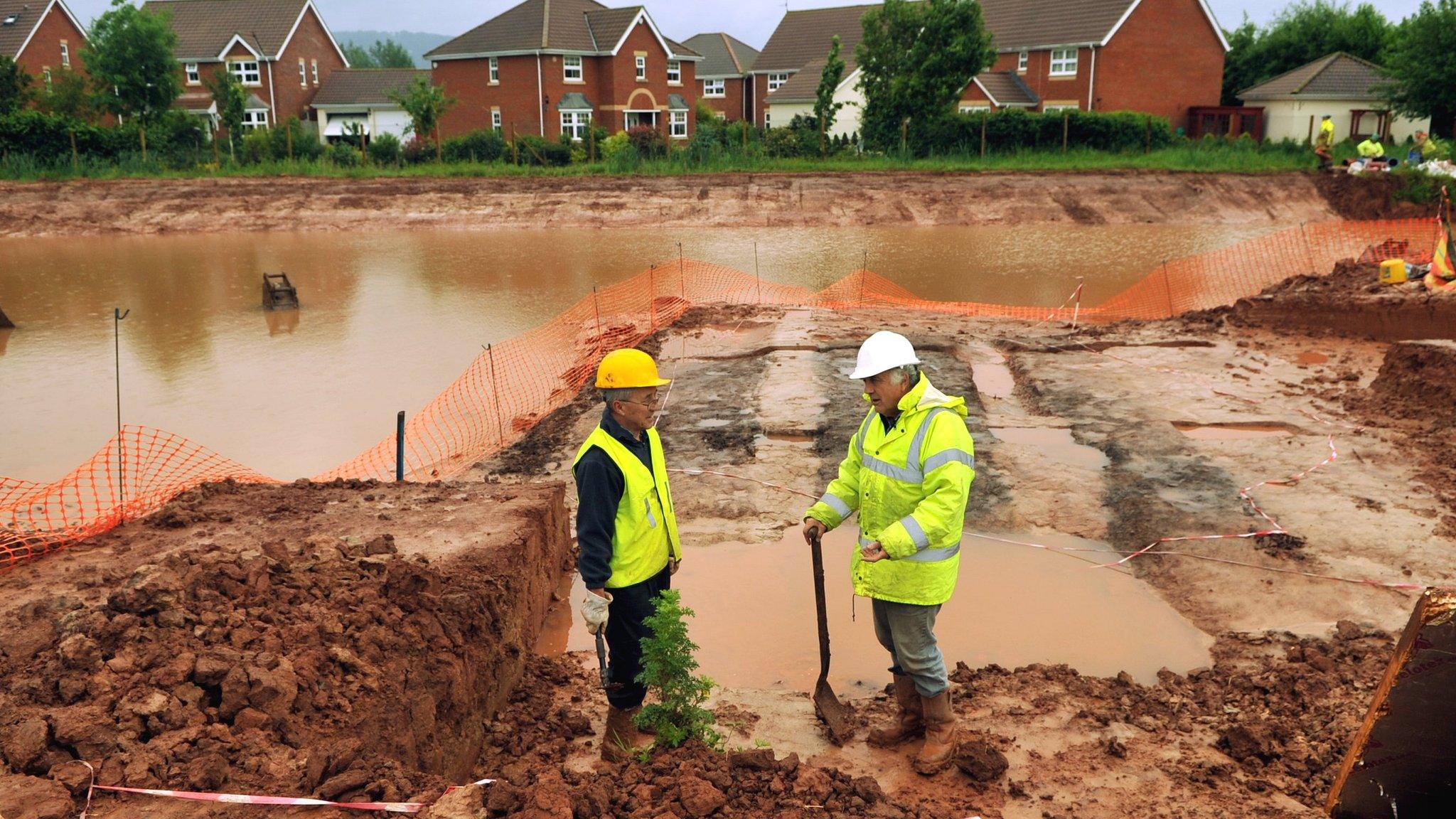Ancient golden crucible found on Monmouth building site
- Published
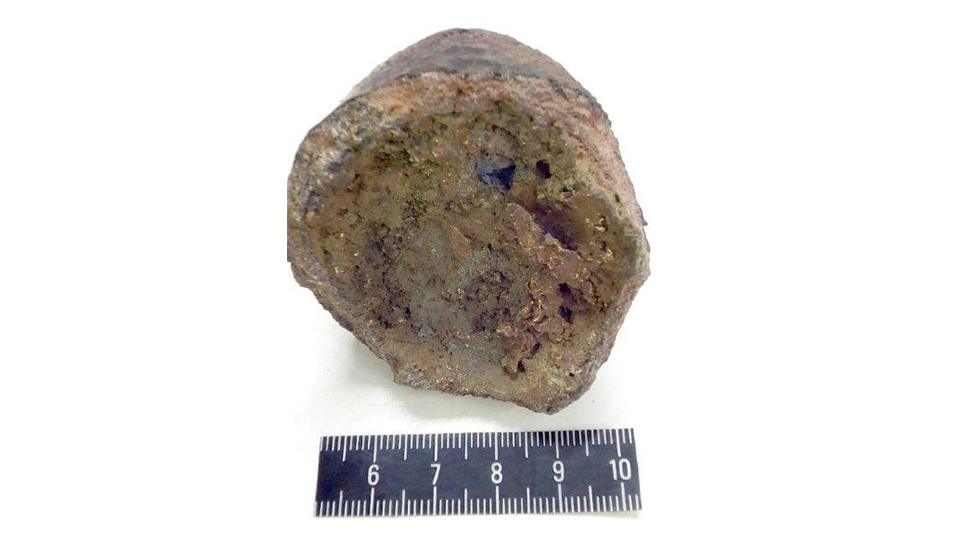
The 5cm by 5cm crucible would've been used to melt gold
An ancient crucible that would have been used to melt gold has been found on a building site in Monmouth.
Archaeologists believe the melting pot, or crock, is a "unique find of national importance" as it still contains gold.
Steve Clarke, chairman of the Monmouth Archaeology Society (Mas), said the building site lies near a prehistoric lake and settlement.
The find has not been officially dated, but archaeologists believe it dates back to about 500 BC.
Builder Paul Evans, from Abercynon, who made the unexpected find at the Parc Glyndwr housing site, said he thought it was "a lump of cast iron" before handing it over to archaeologists.
"I was on the ground and happened to see it on the floor - I had no idea about what it was," the 55-year-old said.
Mr Clarke, a member of Mas for 60 years, said he had "never seen anything like it".
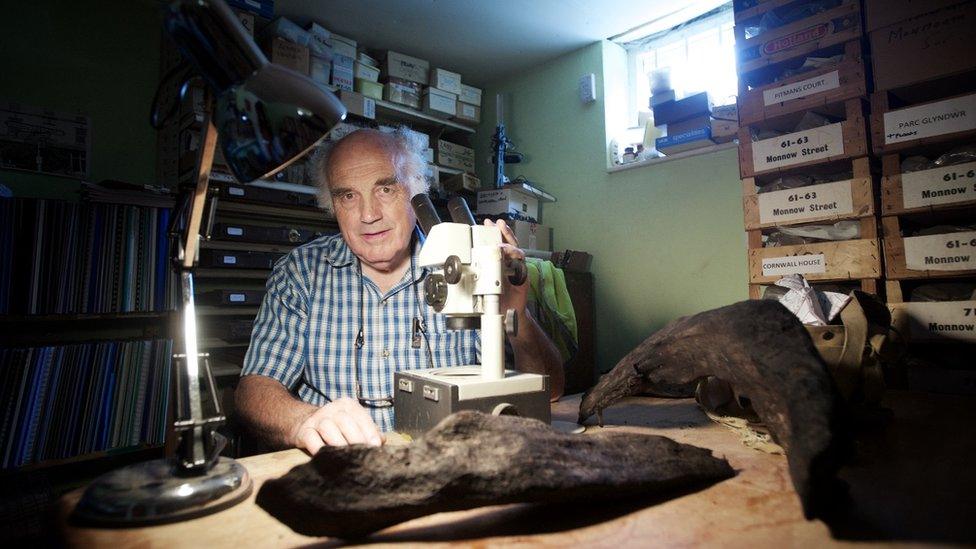
Steve Clarke became a member of Monmouth Archaeology Society when he was 13
"At the moment it seems to be unique. Ancient crucibles have been found before but never with the metal still inside them," he said.
"Other items nearby have been radiocarbon-dated to the Bronze Age, Iron Age or Middle Ages.
"It is of national importance and an unstratified find."
The 5cm by 5cm clay melting pot is broken around the rim but still contains gold within the middle.
It is one of a number of historic finds in the area, which include logwood that has been radiocarbon-dated to the New Stone Age and a Bronze Age boat building.
- Published23 August 2016

- Published22 July 2015
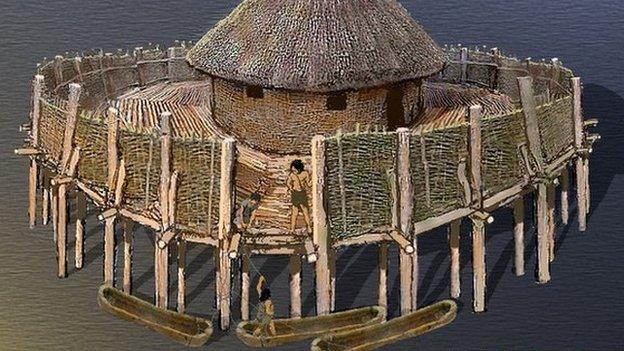
- Published25 September 2013
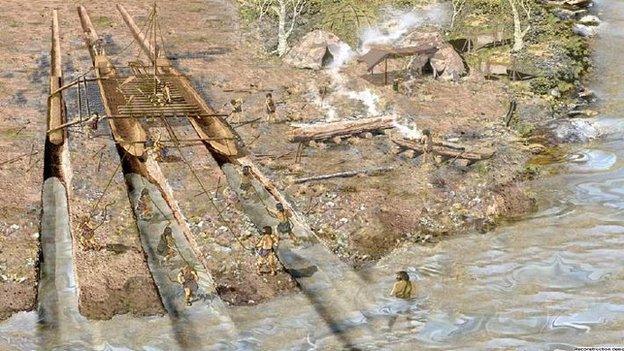
- Published13 June 2012
